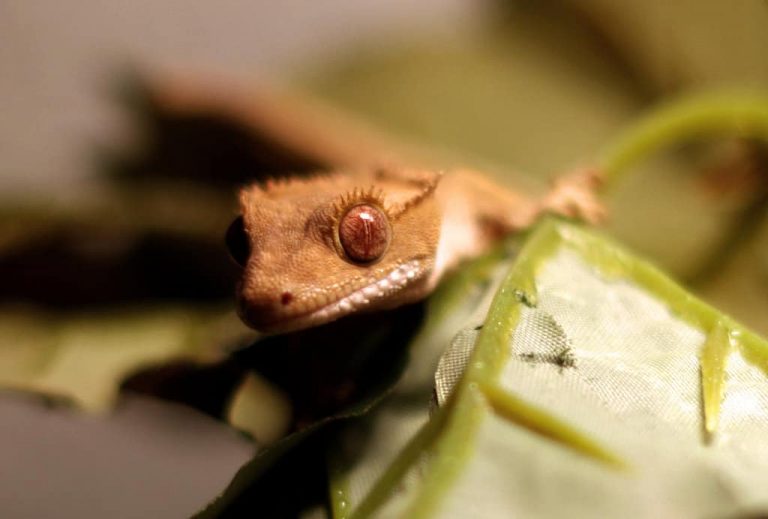How do crested geckos shed their skin?
Crested geckos as one of many types of reptile do shed their skins as they grow. And this behavior will continue throughout their lives. The reason for this is their skin cells don’t grow as crested gecko body. So they have to change to a bigger “shirt” when needed.
As per their nature, when a crested gecko sheds its skin, it usually eats the shedded skin, as such, you would hardly see any shedded skin from your pets. This is to recapture some remaining nutrients used to create a new set of skin, and this particular behavior is meant as a mean to avoid being detected by predators in the wild.
Naturally, crested geckos can shed on their own without your help. Sometimes you can see small pieces of stuck skin near their toes and tails. And when things go bad, stuck skin will constrict blood flow, leading to more serious damage to your pet, such as loss of toes or tail tips.
In such case, you can help your crested gecko by removing those stuck skin, using warm water and a paper towel. Sometimes, a Q-tip also helps.
Interesting facts about crested gecko shedding

One thing to remember, young crested geckos shed more frequently, as once a week. By contrast, adults ones shed only once a month or even less often. That’s why you should watch them closely if you’re owning a baby crested gecko.
Another fact is, crested geckos usually shed at night. So, if you know your pet will shed tonight, remember to maintain a good humidity level in its tank and fill in the water bowl. This will ensure your little reptile buddy won’t get dehydrated during the process.
Are crested geckos nocturnal?
Crested geckos are primarily nocturnal, which means that they are chiefly active at night, while at day, they would remain inert. Geckos would spend the day sleeping in secure spot, in high branches. This means that geckos are safe from the heat of the day, and at New Caledonia, their original home, the heat could be unbearable to this cold-blooded creature.
As you might not know, crested geckos don’t demand high light exposure. In fact, they enjoy room temperature as we do. So, it’s recommended to keep them away from direct sunlight, which may heat up their tanks so quickly and do harm to them.